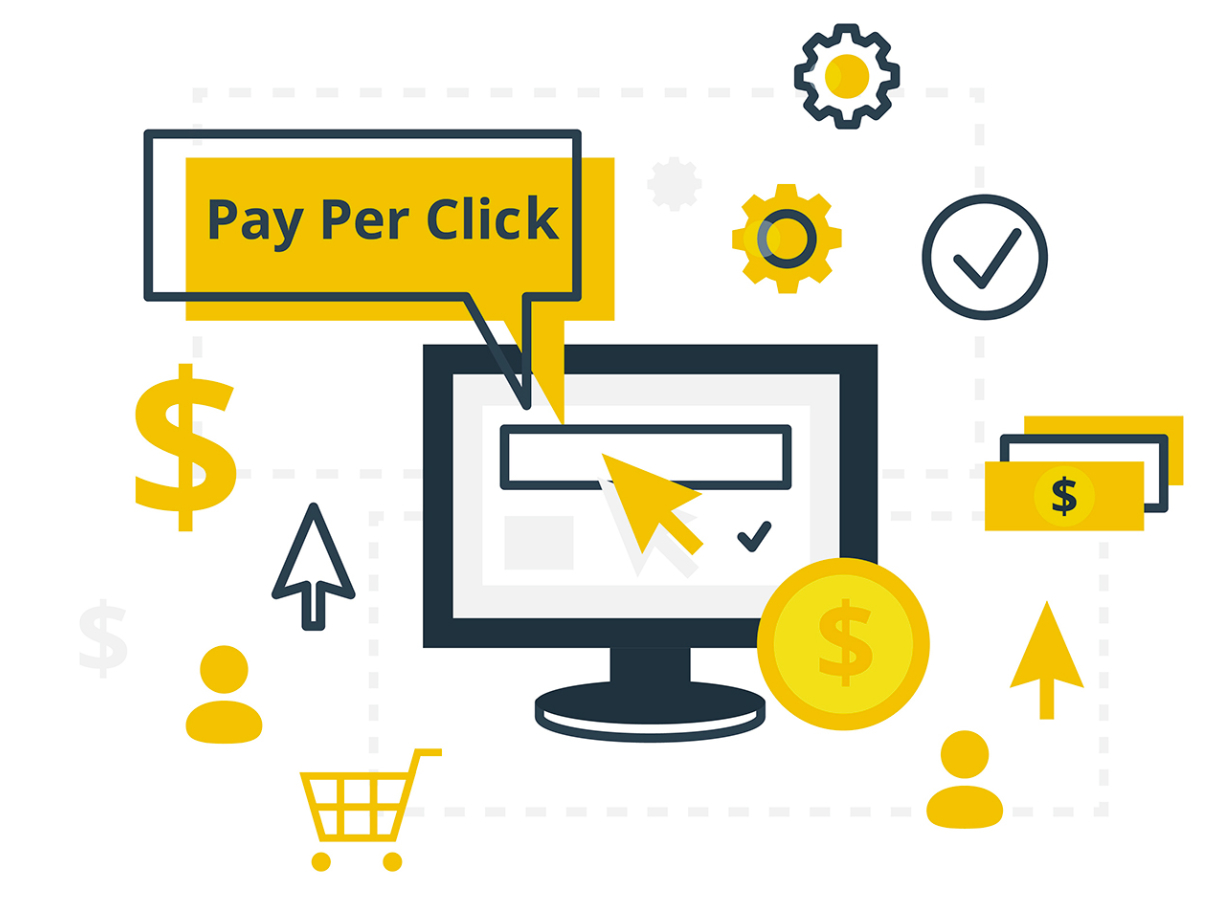Digital marketing can be divided into eight main categories, which are: Affiliate Marketing, Content Marketing, Email Marketing, Marketing Analytics, Mobile Marketing, Pay-per-click (PPC), Search Engine Optimization (SEO), and Social Media Marketing.
What is Digital Marketing in Simple Terms?
Digital marketing is all about promoting products or services online to reach and connect with potential customers. It uses various tools and platforms like social media, search engines, email, and websites to get your message out. Instead of traditional methods like print ads or TV commercials, digital marketing takes advantage of the internet’s vast reach and its ability to track and measure results. By creating engaging content, running targeted ads, and analyzing data, businesses can effectively attract, engage, and convert their audience into loyal customers.
![Introducing Yourself as a Digital Marketer [Example Introduction Included] - Designs Valley](https://designsvalley.com/wp-content/uploads/2024/02/core-components-digital-marketing-1024x585.webp)
Importance of Dividing Digital Marketing into Types:
Dividing digital marketing into distinct types is essential because it allows businesses to address various aspects of online engagement and promotion with specialized strategies. Each type, such as SEO, PPC, or social media marketing, focuses on different channels and goals, enabling targeted and efficient use of resources. This segmentation helps in tailoring approaches to specific audience segments, optimizing performance through focused analysis, and adapting to rapid changes in digital trends. By managing each type individually, businesses can create a comprehensive strategy that effectively reaches and engages their target audience across multiple touchpoints.
The 8 Types of Digital Marketing:
The eight types of digital marketing are:
Affiliate Marketing:
With the rise of online marketing, affiliate marketing often referred to as influencer marketing—has gained significant traction as a way for organizations to connect with consumers. But what exactly is affiliate marketing?
Affiliate marketing leverages the influence of industry experts and social media personalities. By partnering with these third-party influencers, businesses collaborate to promote their products or services in exchange for compensation. Influencers engage their followers through posts, blogs, or videos, driving traffic and generating leads for the organization.
In recent years, affiliate or influencer marketing has surged in popularity, thanks to platforms like TikTok, Instagram, YouTube, and blogs becoming central to entertainment and news. The affiliate marketing sector was estimated to be worth $13 billion in 2023, according to Influencer Marketing Hub.
The demand for marketing professionals is also on the rise. The U.S. Bureau of Labor and Statistics (BLS) projects a 6% growth in advertising, promotions, and marketing manager positions through 2032. In 2022, the median salary for these roles was $156,580, as reported by BLS.

Content Marketing:
Content marketing focuses on using storytelling and sharing valuable information to boost brand awareness and encourage actions like signing up for emails or making a purchase. This “content” can include blog posts, e-books, videos, podcasts, and more. The main goal is to offer value to consumers and build a lasting relationship, rather than just pushing a sale.
It works alongside other digital marketing strategies, such as SEO and social media, and provides insights into customer behavior through analytics. Unlike pay-per-click (PPC) advertising, content marketing is a long-term strategy that builds a resourceful content library to attract and engage users over time.
For those interested in writing or creating videos and audio, content marketing can be a rewarding field. There are several free or low-cost platforms for getting started, such as WordPress, Medium, Hubspot CMS, and Wix.
Email Marketing:
Despite the rise of social media and mobile apps, email remains a highly effective marketing tool. It can be part of a content strategy that offers value to customers and helps convert them over time. Successful email marketers know how to craft engaging campaigns, target the right audience, and use data to make strategic decisions.
Key metrics include the open rate (how many people opened the email) and the click-through rate (how many clicked on a link within the email). To improve these rates, marketers can create urgency with time-limited offers, personalize emails by using recipients’ names, and let users choose how often they want to receive emails. These practices can help increase engagement and maintain a healthy subscriber list.

Marketing Analytics:
One major advantage of digital marketing is its ability to be precisely tracked and measured. Unlike the old days of tracking only coupons or direct mail, today’s analytics provide detailed insights into user behavior, such as how often they click links, how long they stay on a webpage, and how frequently they open emails.
While the wealth of data can be overwhelming, it’s crucial for marketers to understand and use it to improve strategies and show their value to the company. Tools like Google Analytics are commonly used to monitor website performance, track keywords, and analyze user navigation. Effective use of this data helps marketers quickly adjust campaigns and build successful strategies based on proven results.
In a digital marketing degree program, you’ll learn about various aspects of the field, including marketing strategies, branding, mobile marketing, and digital advertising.

Mobile Marketing:
Mobile marketing focuses on reaching your target audience through their smartphones or tablets. It involves using text messages, social media, websites, emails, and mobile apps to connect with people. Marketers can customize offers based on location or time, such as sending promotions when a customer enters a store.
In February 2021, Statista found that 46% of people spent 5 to 6 hours daily on their phones, while 22% spent 3 to 4 hours. From late 2020 to early 2021, U.S. mobile users spent about 40 minutes a day on social media, with Facebook and Instagram being the most popular. By 2024, average daily phone use in the U.S. is expected to reach 4 hours and 39 minutes.
E-commerce has surged, with global retail sales expected to exceed $6.3 trillion in 2024. Marketers recognize the importance of reaching customers on their phones, making mobile marketing a crucial part of their strategy.

Pay-per-click (PPC):
Pay-per-click (PPC) is a type of paid advertising where you only pay when someone clicks on your ad. Unlike SEO, which builds long-term traffic, PPC is a short-term strategy: once you stop paying, the ad disappears. You see PPC ads at the top and sides of search results pages, while browsing the web, watching YouTube, or using mobile apps.
The cost of PPC ads depends on how competitive your keywords are. Highly competitive keywords will cost more, while less competitive ones will be cheaper. You can also choose to show your ads globally or target specific geographic areas, which is useful for local businesses. This targeting helps ensure you’re not wasting money on users who are too far from your business.

Search Engine Optimization (SEO):
The goal of SEO (Search Engine Optimization) is to improve a business’s ranking in Google search results, which increases traffic to its website. To achieve this, SEO marketers use keywords and phrases that people commonly search for and incorporate them into their content. SEO involves various factors, including the words on your web pages, the quality of external links, and how your website is organized.
Key aspects of SEO include:
Content Indexing: Ensuring search engines can read and understand your content by using features like image alt text and transcripts for videos.
Link Structure: Organizing your website so that search engines can easily find and navigate all your content. This involves proper formatting of links, URLs, and sitemaps.
Keywords: Using relevant keywords effectively in your content and headers, without overstuffing. High-quality content with well-placed keywords helps improve your search rankings.

Social Media Marketing:
Social media marketing involves more than just posting on platforms like Facebook and Instagram. To be effective, it needs a strategic and coordinated approach. Marketers should use tools to schedule posts, but automation should not replace genuine engagement. Social media efforts should align with the company’s overall marketing strategy to ensure a consistent brand message.
Analyzing the performance of social media posts is crucial for refining strategies. According to Statista, 86% of professionals found increased company exposure to be the top benefit of social media marketing, while 76% noted increased website traffic as a major advantage.
Besides major platforms, there are free tools like Google My Business, eBay, and Facebook Messenger that can also help spread your message. Successful social media marketing combines creativity with data-driven strategies and is more complex than managing a personal social media profile.

Demand for Digital Marketing Types:
The demand for different types of digital marketing is growing rapidly as businesses aim to reach their audiences more effectively online. Each type, like SEO, social media marketing, and email campaigns, plays a unique role in connecting with customers. SEO helps improve a website’s visibility on search engines, while social media marketing engages users on platforms like Facebook and Instagram. Email marketing nurtures customer relationships through targeted messages. As more people use the internet for shopping, learning, and entertainment, businesses need to use these various digital marketing types to stay competitive and effectively attract and retain customers.


